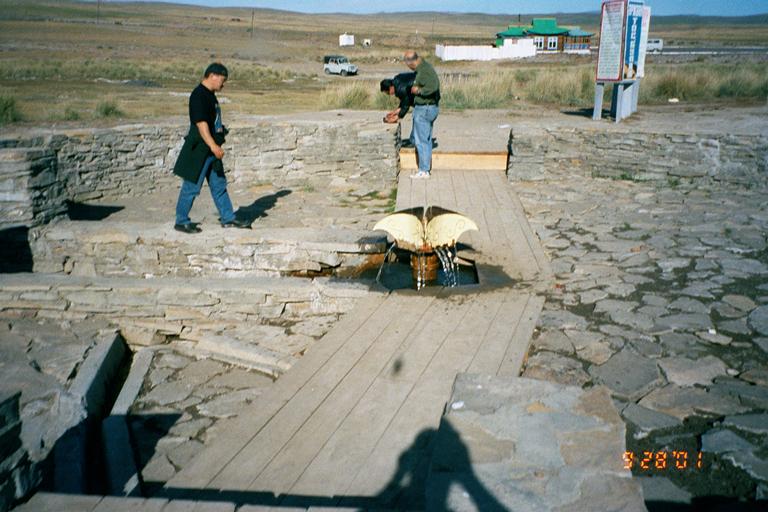Arzhan
Arschan (Russian Аржан, scientific transliteration Arzan, English transcription Arzhan, . Official place name in Russian and Tuvan Аржаан, Arschaan ) is a village and referred to the local, same name, formerly Scythian burial place for princes in Central Asia in the northwest of the Russian republic of Tuva (south of the Krasnoyarsk region, north of Mongolia ), whose story came to light again by various excavations.
Geographical location
In the region of Arschan is a plateau, which is also known under names such as Tuwinisches Valley of the Kings and Valley of the tsar from the standpoint of excavations. It is used as part of the Siberian steppe from Ujuk, an eastern tributary of the Big Yenisey, is removed. Its center is located about 10 km west of the small town of Turan and about 40 km north- west of Kyzyl, on the northwest border of Tuva. The valley itself is oriented in east-west direction.
The village Arschaan is the administrative center of the rural community ( Tuvan Sumon ) Arschaanskoje selskoje posselenije to the even the smaller village located 8 km southwest Tschkalowka heard. The municipality has 835 inhabitants (14 October 2010).
Excavations
Regional and culture are typical kurgan tumuli and gold discoveries and the funeral together with horses. The number of local grave mound is in the hundreds. In the interior of such a hill are constructions made of spruce, the circular form chambers, of which there were at one hill ( Arschan stage) 70. These hills are also arranged as a special feature in several parallel chains and covered with stones. The excavations were numbered, so there are about Arschan 1 (> 100 m diameter) or Arschan 2
Excavator of Arschan 1 was MP Grjasnow ( in the 1970s ), while the uncovered interesting wooden structures and thus the Scythian culture on previously unexplored early periods of the late 9th and early 8th century BC laid bare. Links with finds from the Late Bronze Age in Western Siberia and the northern Pontic steppes could be produced successfully by him. The hill was, as it turned out, been looted in earlier times - in the central grave chamber were found only remnants.
Further excavations were 1997 ( Kurgan Arschan - Tarlag, in the west) and 1998-2003 ( Arschan 2, the Aldy -Bel- cultural belonging ) by the German Archaeological Institute instead. The second site was initially measured geomagnetically by the Bavarian State Conservation Office in Munich, then in 2000 partially and fully to 2003 exposed. From Arschan 2 is reported that although earlier must have been attempts to open the grave, but they were probably broken, so that the grave chamber remained intact. It is noteworthy that Russian investigators who, evaluate the archaeological finds at their preliminary repository, the Hermitage (Saint Petersburg ), assume that the artistic work preceded the more famous Greek art objects. The reputation of the Scythians, they were only a wild horde of steppe nomads, has clearly contradicted this finding.
Another Scythian find was made in summer 2006 in Mongolia. This process was documented by the ZDF in the series Schliemann's heirs. Was found conserved in the ice of the permafrost mummy of a Scythian warrior horsemen, among other things, had a splendid fur coat and gold headdress with him.
See also: Gold of the Scythians








